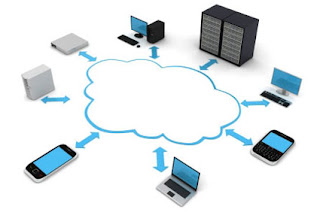
Today’s businesses are more concerned
about acquiring better customers, a segment that sustains the repeat
business of a company. But the ground reality for the companies is
that these customers are not acquired shortly. This requires a
comprehensive customer engagement process. From attracting customers
to the business to nurturing their expectations across the customer
life cycle needs huge marketing efforts. As new channels of
communication are evolving, the marketing department is getting the
heat of channel optimization. For example, if some customers are
eager to connect through social media, some prefer a more direct
communication through phone or chat. The diversity of customer
interest is another hurdle for the marketers to roll out an optimized
marketing campaign. Although personalized communication is the best
option to transform a stranger to customer, the logistics of
execution sometimes restricts a marketer to adopt a particular
channel.
In real-world scenario, companies face
many constraints while executing an optimized marketing program.
Multiple channels, various offers, and diverse customer segmentation
increase the complexity of marketing optimization. However, smart
marketers prioritize campaigns, channels, and customers singularly or
in groups depending upon company’s business objectives. For
example, a company desiring to increase the number of customers in a
particular segment would certainly like to prioritize the customer
segmentation, but at the same time it can’t ignore the campaign and
channel. For any marketer, the judicious balance among the three
elements – campaign optimization, channel optimization, and
customer optimization - is the key to successful marketing
optimization.
In each optimization process, a company
wants to measure the returns on investment. As marketers define a
strategy to acquire a customer base for a new product, the first
thing that triggers off the debate is customer segmentation: knowing
more about their priorities, buying behavior, and brand affinity. For
instance, customers consistently using a product for many years are
difficult to be trapped by a mere campaign. Here the marketers need
to understand the priorities of the customers, the reason behind
brand loyalty, and if they need a better product within the same
price range. Well, the customer prioritization depends upon a number
of factors: the offerings, the pricing, and most importantly some
opinion leaders to claim the value of the product. With competitive
market intelligence a company can develop a better product to enter a
particular market; design a campaign to address the customers’
expectations; and prioritize the channels to reach out to them. In
marketing optimization, the marketers should focus on the following
best practices to optimize the results.
Invest on Quality Data
Data plays a major role in marketing
optimization process. Trusted data can multiply the power of
marketing campaign. Any marketing campaign requires information about
the demographic information, risk information, prior customer
response to a campaign, and profitability. While these data sets can
be availed from different sources, the credibility of data plays a
critical role in the success of a marketing campaign. If a company
can access to the workable data, programmatic marketing can deliver
the desired results. Thus, businesses should invest judiciously to
aggregate customer data. If the quality of data gets jeopardized, the
investment made in the marketing campaign will be at risk.
Prioritize Optimization within
Constraints
Every company has certain constraints;
however, the business objectives are always kept sacrosanct. In
marketing optimization, a marketer may find some limiting factors
while strategizing a program, but these factors should be considered
as the parameters of innovative disruption. For instance, when a
particular factor doesn’t support the marketing program, a new
factor should be considered to play a viable alternative. If a
company wants to launch a campaign within a low budget, the marketers
shouldn’t lower their business target, but they should apply
different methods of low-budgeted campaign methods to target the
customer base and derive the expected results.
Select the Right Technology
Today’s marketing is increasingly
technology-centric. The evolution of social media platforms,
mobility, big data, and CRM has transformed the marketing automation
process. But there is a catch. Though all new technologies can
magnify the intensity of a marketing program, a specific technology
can always deliver better results. A campaign that needs real-time
response from the customers can’t be done through print media, but
it can be effectively managed through social media. Based on market
demand, the CRM vendors are coming out with feature-rich products to
ensure exceptional customer service. The marketing heads should focus
on the right technology to optimize their marketing efforts.
Increase Customer Contacts
Customer contact information is
critical for launching a marketing campaign. Larger the customer
base, customer segmentation can be more meaningful. Recently, the
social media platforms such as Facebook and LinkedIn are the largest
source of user information. Using these network exchanges companies
can roll out a programmatic marketing campaign and can achieve the
desired results. Companies can also leverage big data to access to
these contacts and derive a predictable buying analysis.
Leverage Existing CRM
An existing CRM is the primary source
for customer touch-points. A company can use the CRM to analyze
customer behavior, buying habits, spending modality, etc. The
customer data available in the CRM can be used to propel a marketing
campaign. Before adapting to a new CRM, the companies should devise a
data transition plan so that no historical data is lost.
Pilot and Replicate
Large marketing programs need huge
investment. Without verifying the marketing returns, investing on a
new program could be risky. To avoid such risks, companies to start a
pilot on any marketing program and analyze the returns on investment.
If the program is successful, then the companies can replicate the
strategy and scale up the execution.
